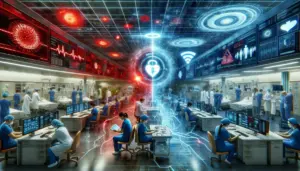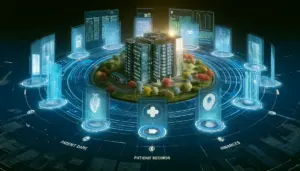Technology Adoption in Manufacturing is Key to Attracting a Millennial Workforce
Millennials have been raised in a society in which technology almost completely permeates all aspects of their lives. They communicate on smartphones, they do their school work and homework on computers, and the fast food restaurants, where they likely had their first jobs, probably had digital menus above and behind them and digital screens on which they took your order in front of them. They are digital experts, and they expect the world to be digital everywhere they go.
Yet, how many manufacturers are using the latest computer-driven techniques? It should not be surprising, then, that many millennials consider manufacturing to be tedious, antiquated, and altogether too labor-intensive to even be on their radars as places to work.
How to Attract Millennials
If manufacturers are going to attract millennials to their workforce, they are going to have to adopt and utilize the latest advances in computer-aided design (CAD), 3D printing, robotics, computer numerical control (CNC) machining, artificial intelligence (AI), and the industrial internet of things (IIoT). These emerging technologies are also vital to creating more streamlined manufacturing processes, improving productivity, and maintaining one’s competitive edge. These emerging technologies are precisely why millennials believe in technological solutions.
Why is Manufacturing Hesitant to Adopt Technology
Many manufacturing companies may be hesitant to adopt many of these new technologies in no small part because their current workers may not be (or may not be perceived to be) tech-savvy enough to make the transition. This creates a bit of a Catch-22, where new workers aren’t attracted to manufacturing because of the perception that manufacturing is way behind when it comes to the latest technology, and manufacturing companies are hesitant to adopt the latest technology because they don’t have the workers able to use it.
Clearly, the businesses are the ones who are going to have to make the first move. After all, you’re not going to hire people to run a machine you don’t yet have. At the same time, you’re installing the sensors, cameras, and so on necessary to bring the IIoT into your manufacturing plants, you will need to hire people to run it and train your supervisors on the apps and what the data means that’s coming in. Monitoring, control, and data usage can also be improved using AI and the cloud.
Technology Improves your Manufacturing Process
Adopting CAD and hiring millennial designers trained almost exclusively on CAD is going to make your designs more complex and more precise. 3D printing, robots, and CNC machining are going to allow you to turn these more complex designs into actual objects then. The adoption of such technology not only means you’re going to have a much larger pool of employees, but also a significantly improved manufacturing process.
Genesis Products believes that millennials are a tremendous untapped resource for manufacturing workers. To attract these highly educated and very tech-savvy workers, manufacturers are going to have to meet them where they’re at. Fortunately, that also means improving your overall manufacturing process.
To learn more about Genesis Products, visit us at https://genesisproductsinc.com/industries/ today!








